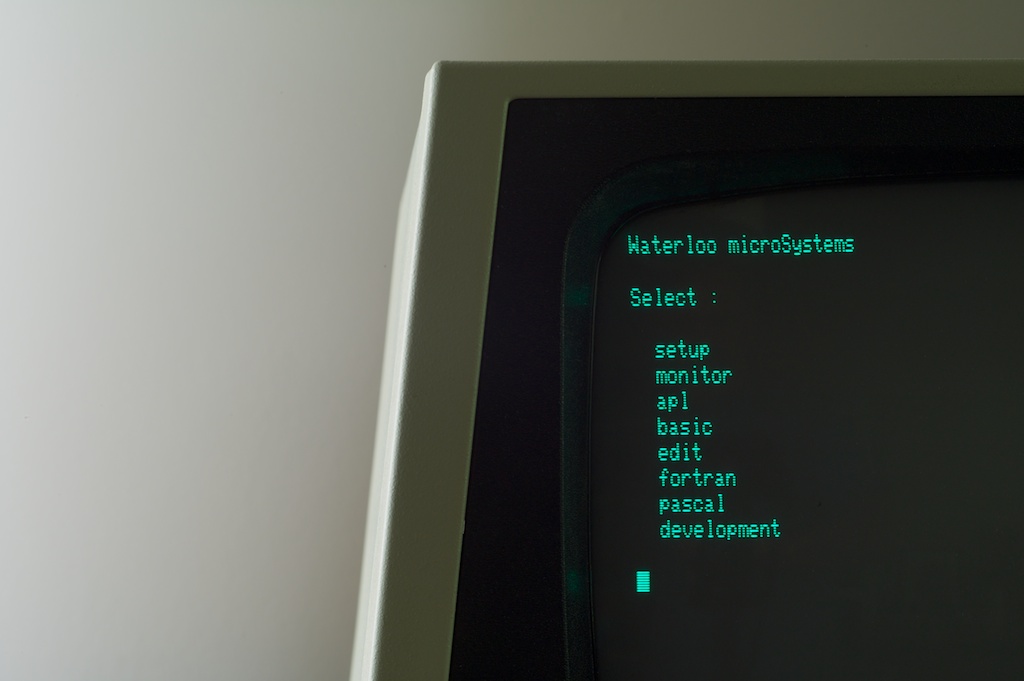
The story of the Commodore SuperPET has always been something of a mystery to me.
The SuperPET was the last of the original PET computers, but was oddly unrelated to its siblings; it featured hardware and software that were radically different from every other machine in the series.
Commodore’s key manufacturing strength was vertical integration – they even went so far as to design and build their own semiconductors – but the SuperPET prominently featured a competitor’s microprocessor.
Somehow, just as Commodore was making a strategic move away from building high-end machines to focus on low-end computers like the VIC-20, they produced the most expensive and complex PET ever.
Stranger still, the key software for the SuperPET came from an academic software team at the University of Waterloo, and much of the hardware design seems to have been Waterloo’s as well.
How did a group at a small university in Canada end up designing their own microcomputer, and how did they convince one of the largest personal computer manufacturers in the world to build and market it?
How did the SuperPET come to be?
Waterloo
Let’s start with the University of Waterloo. Why did they care about microcomputers, and how did they come to be involved with the SuperPET?
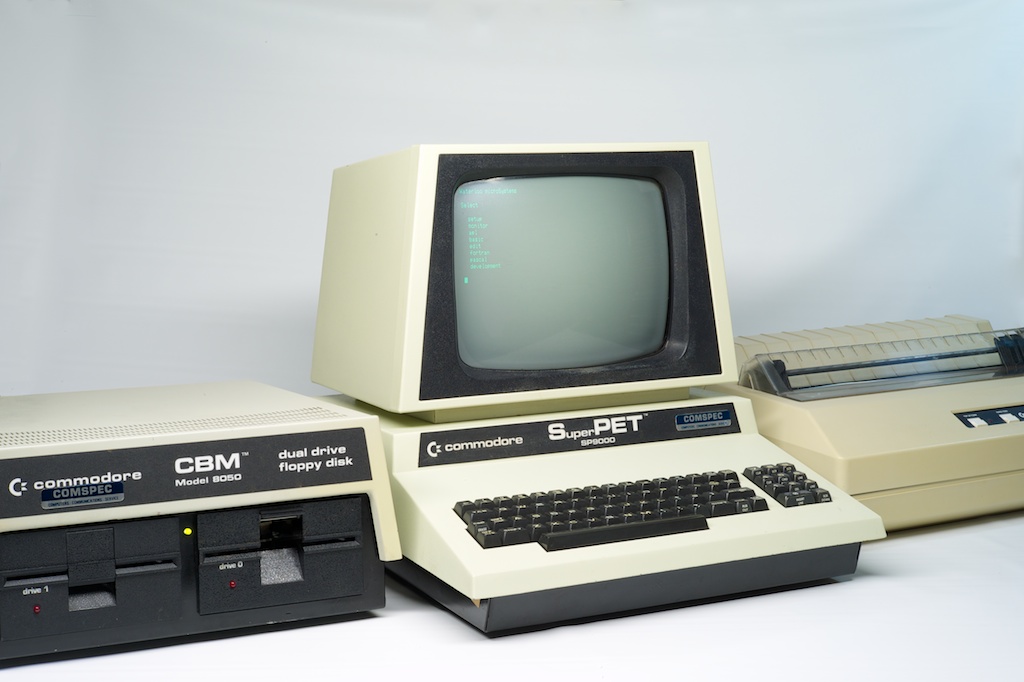
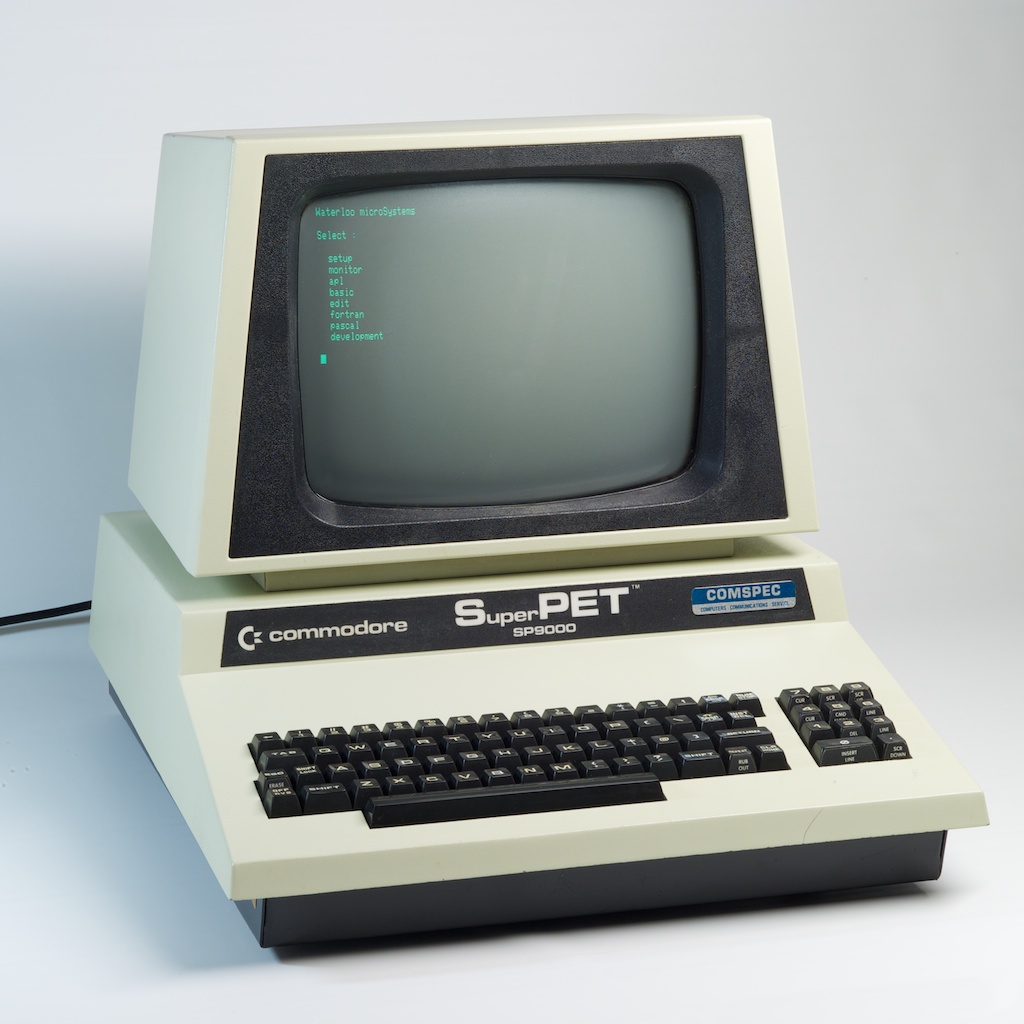
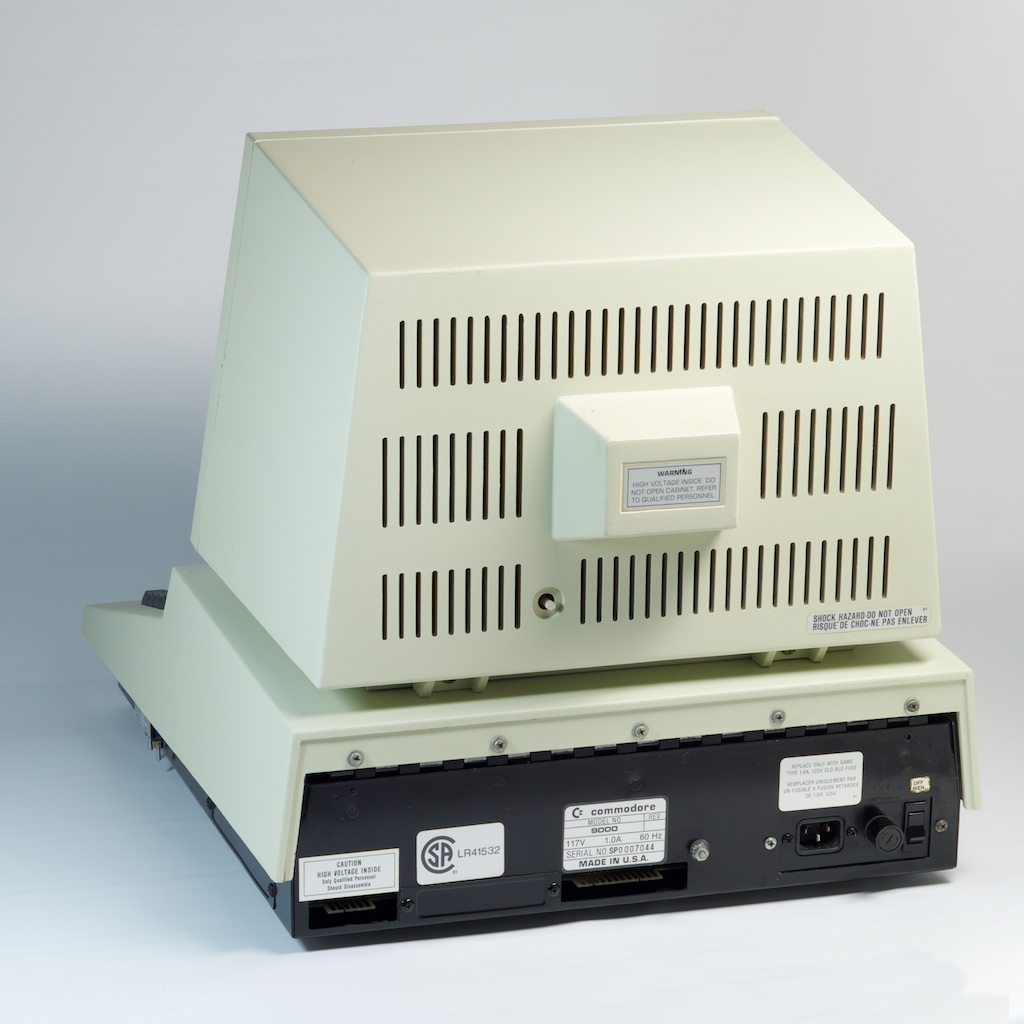

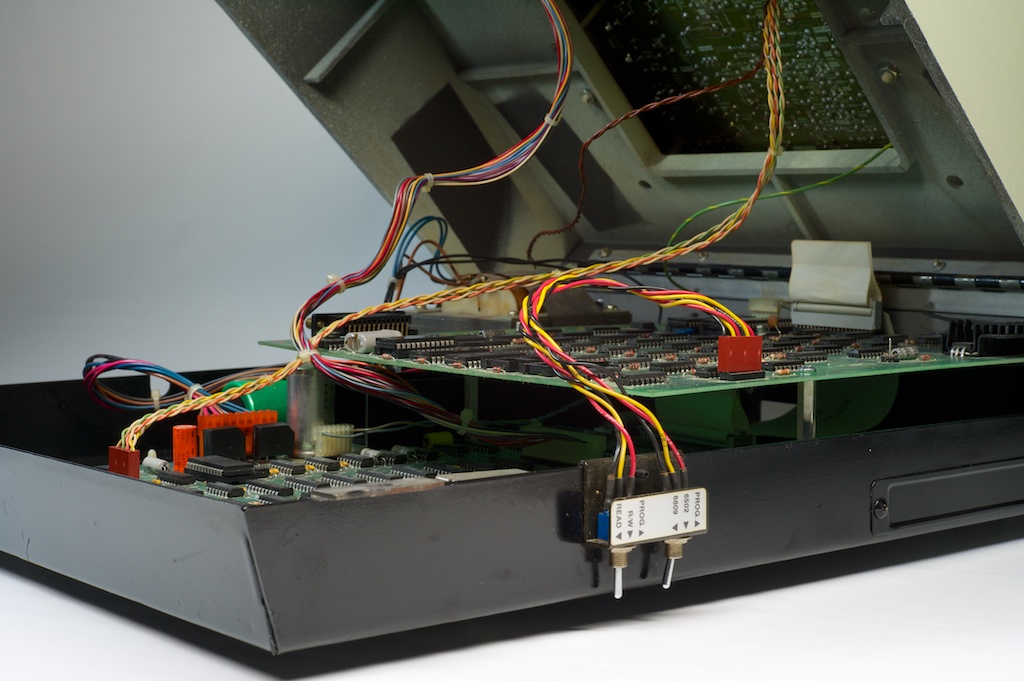
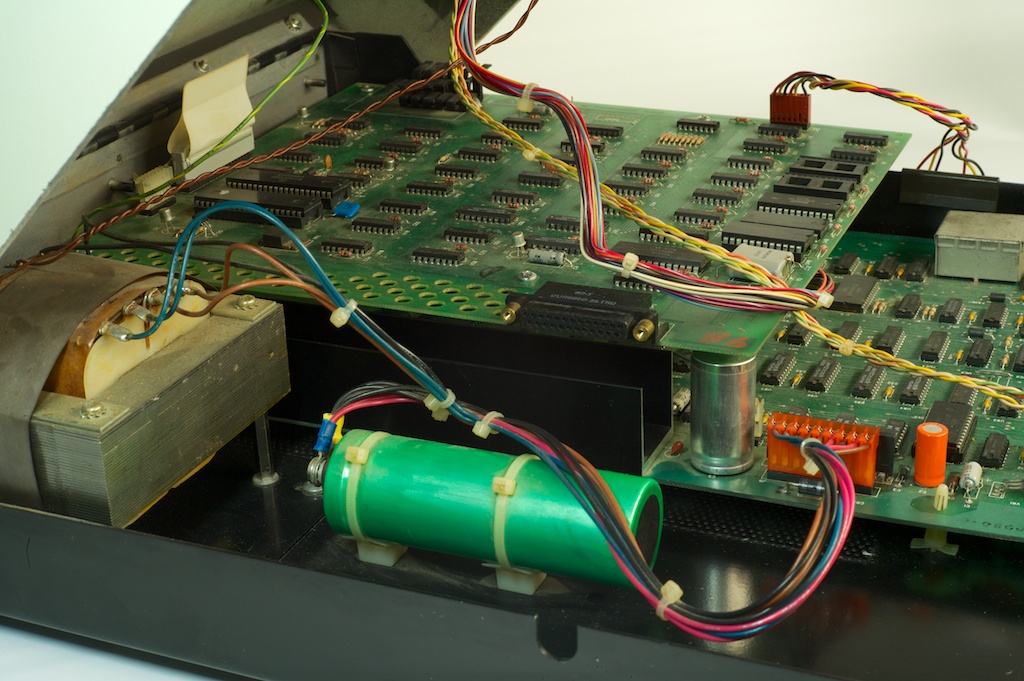
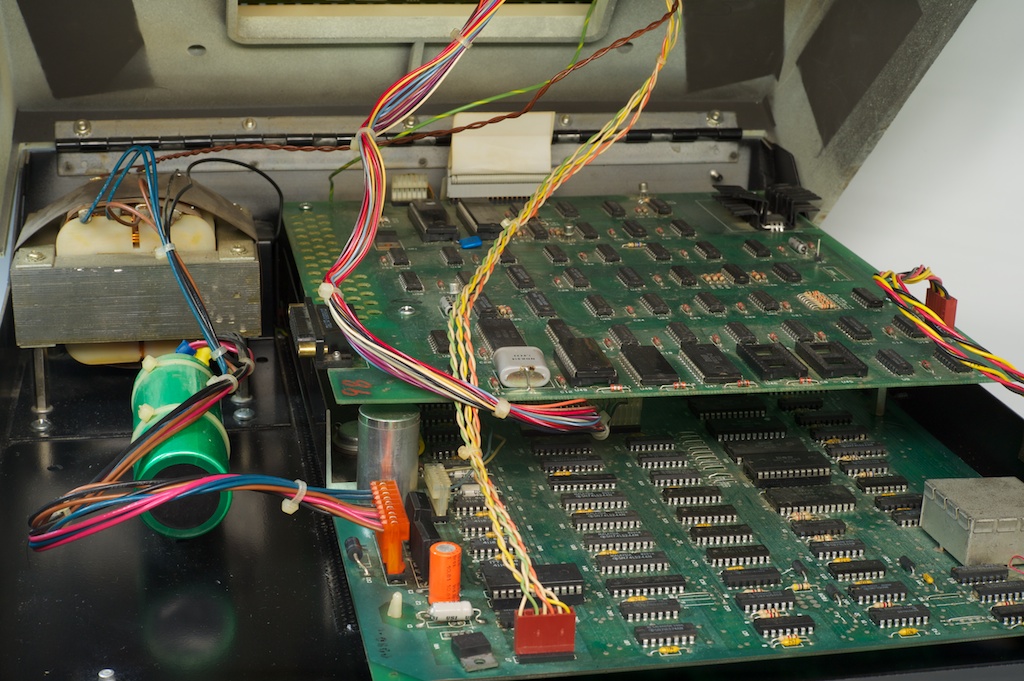
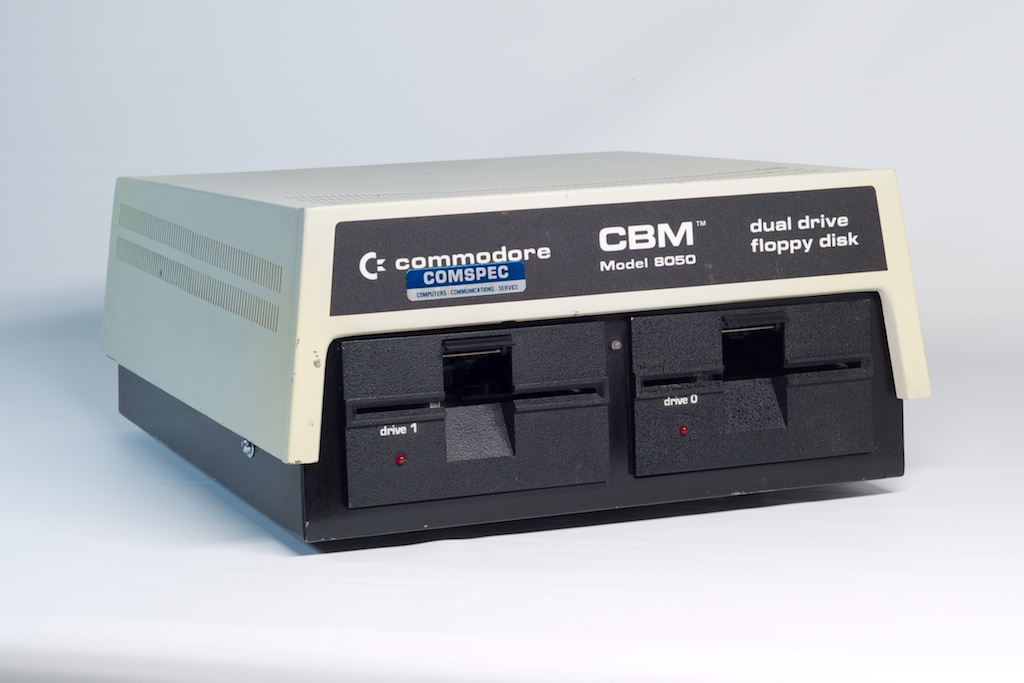
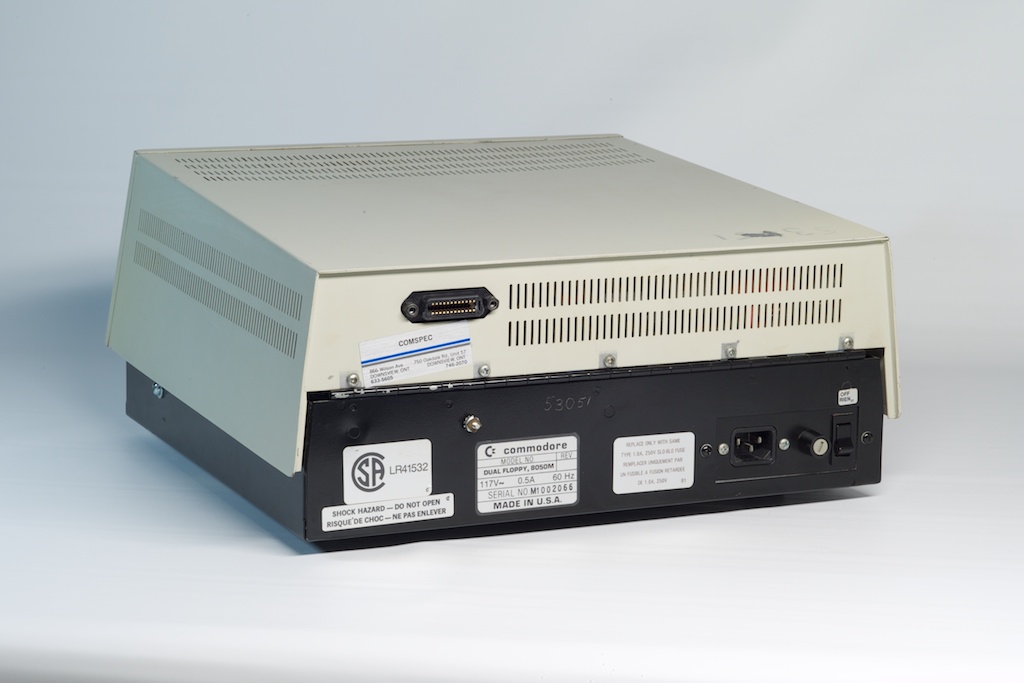
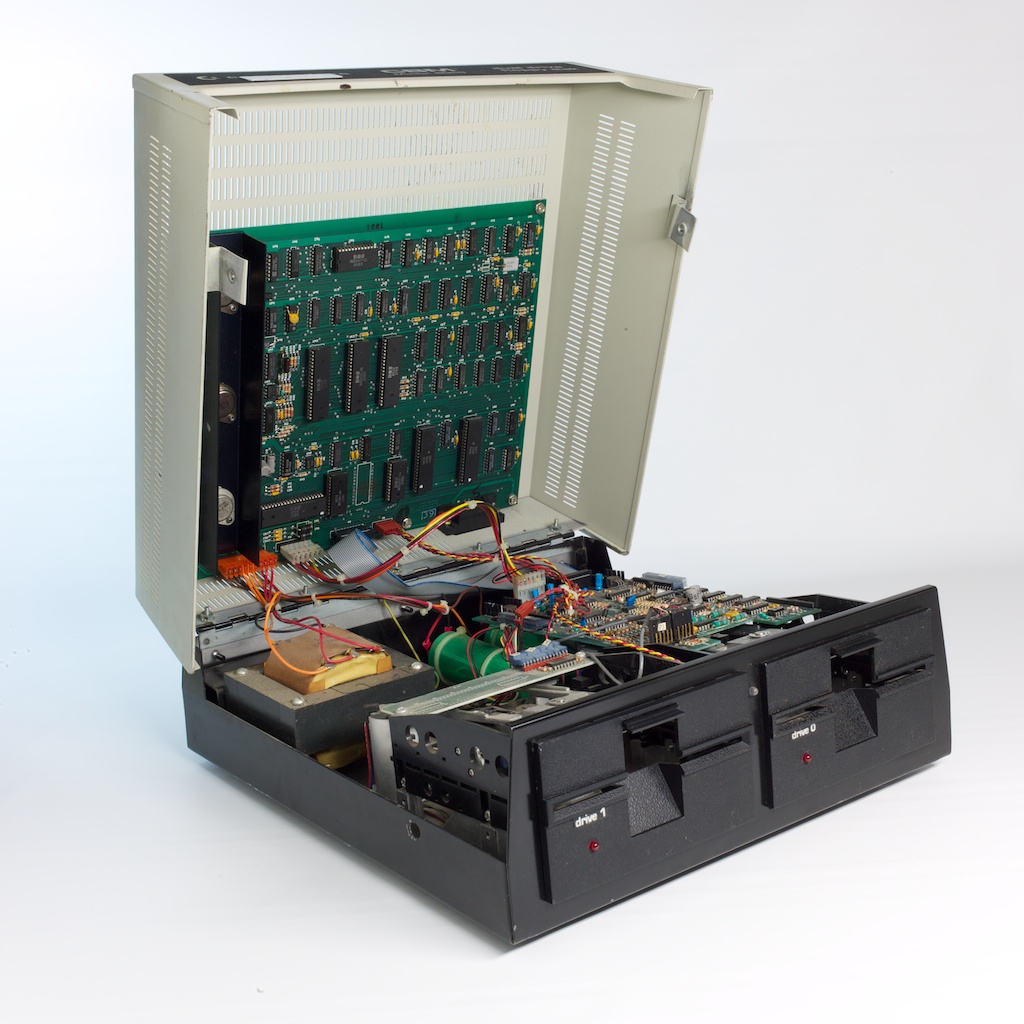
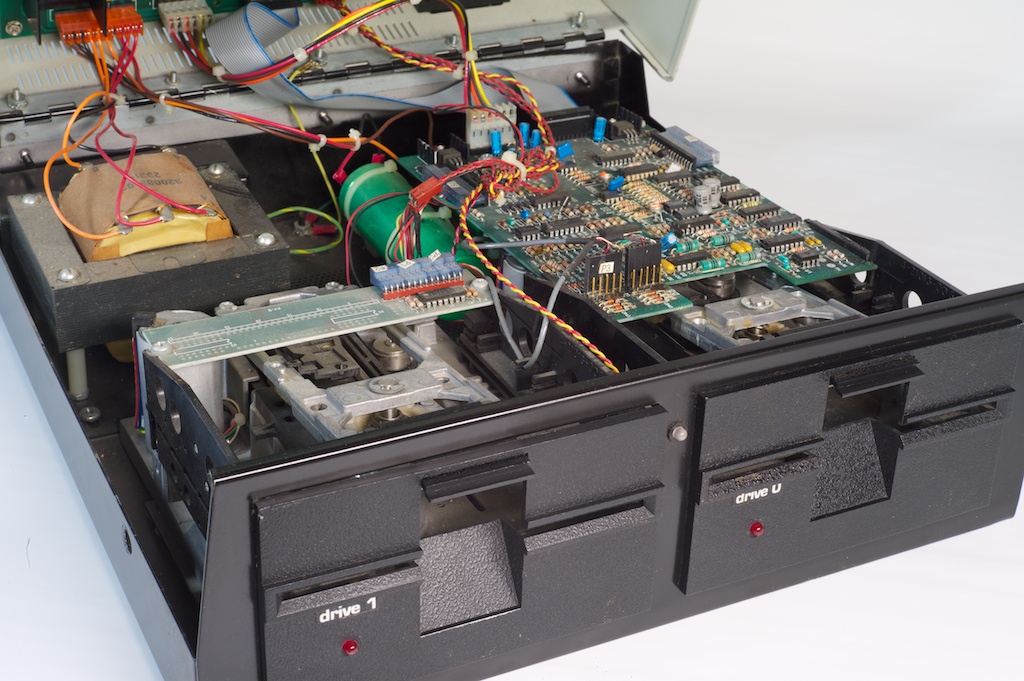
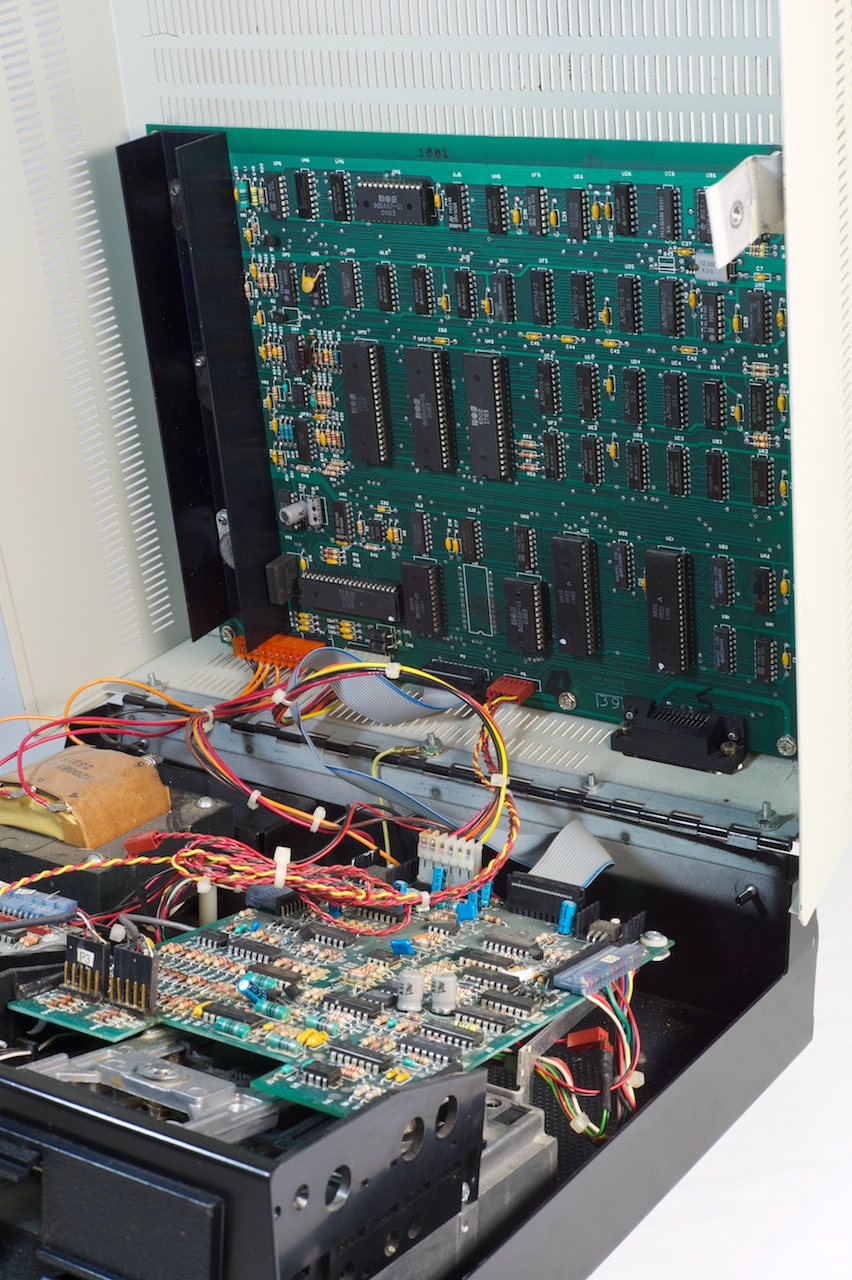
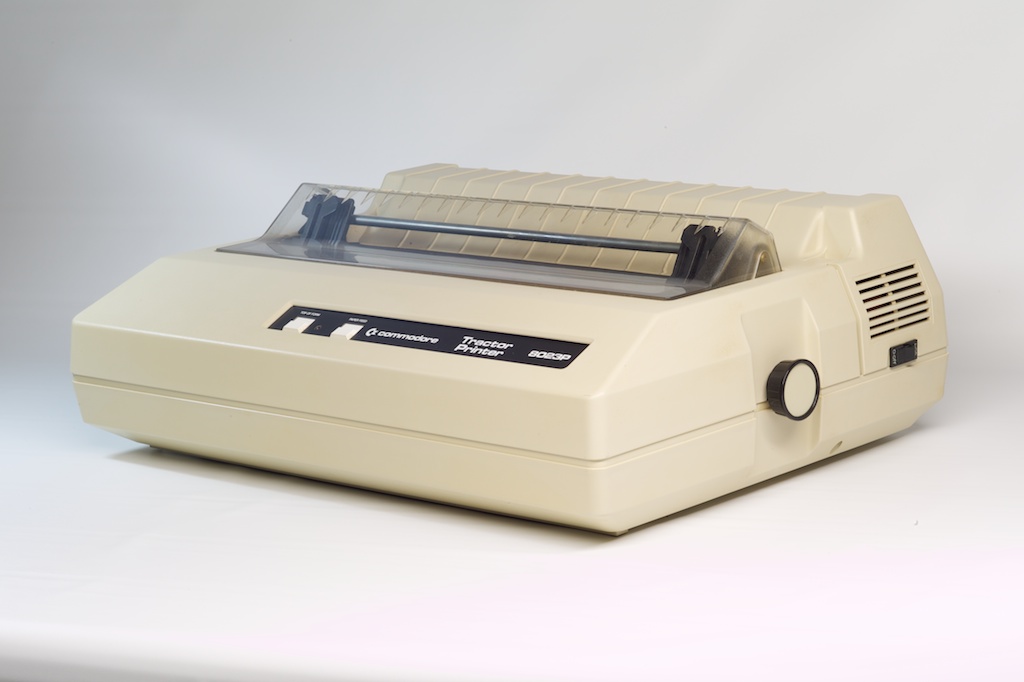
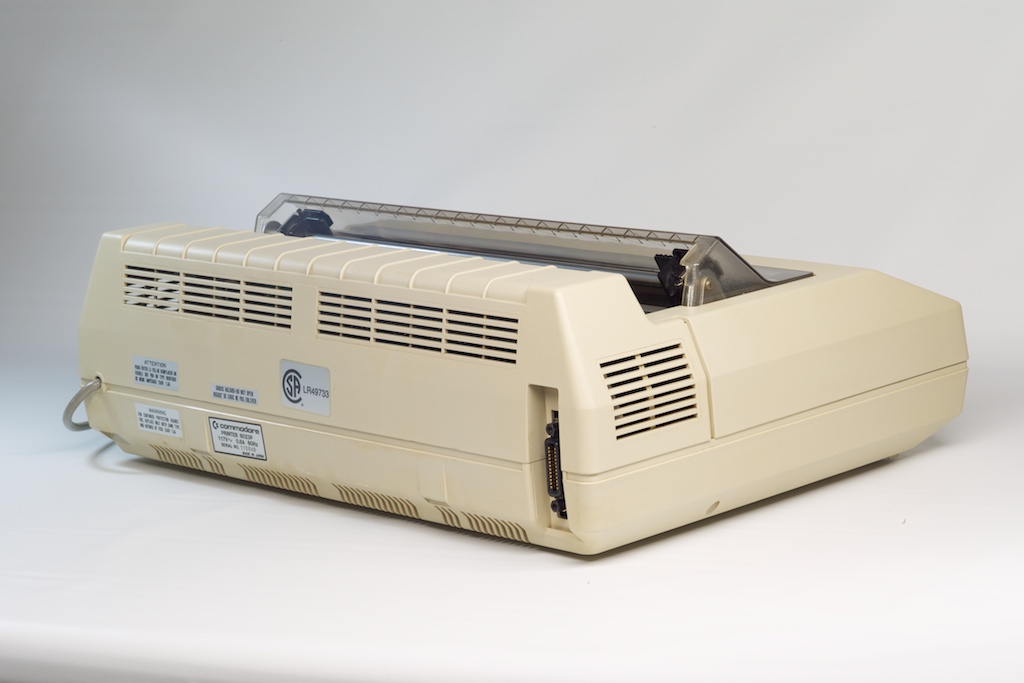
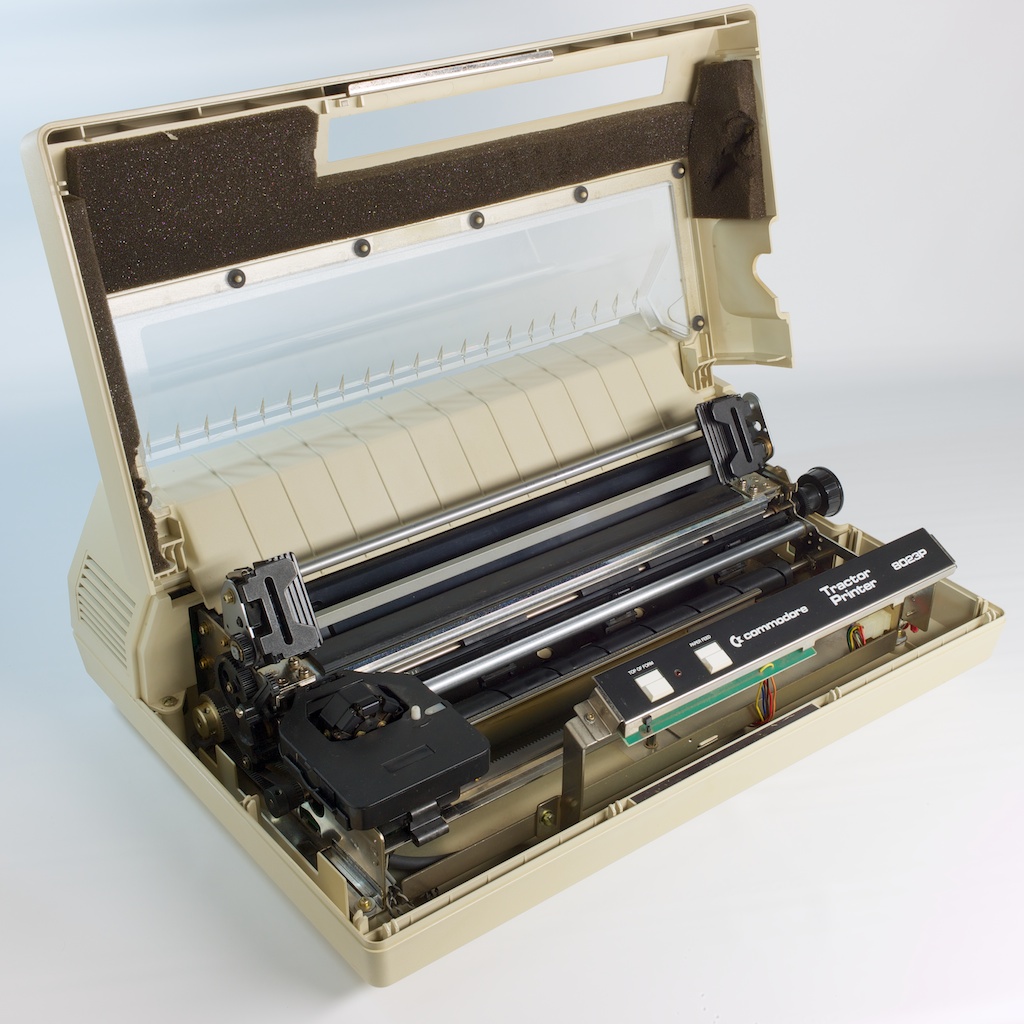
UW was founded in 1957 in Waterloo, a small community in southern Ontario, Canada.
From the beginning, the school had a strong focus on engineering and mathematics, and particularly on the “new” fields of computers and computing education.
As the University worked to establish itself in the early 60’s, the CS department was trying to find good tools for teaching computer science. Like most universities at the time, Waterloo was a mainframe, batch-oriented IBM shop – their main computing resource was an IBM 7040, and later they upgraded to a 360/75. The problem was that many of the tools that were available for those systems weren’t well-suited for education. The standard IBM compiler for FORTRAN, for example, was cryptic and exceedingly slow, and was optimized to produce the best object code possible. Student computing, however, didn’t generally care about the efficiency of the resulting executable; what universities wanted for coursework was quick turnaround, excellent diagnostics, and minimal resource usage – three things that the expensive compilers from IBM didn’t do well at all.1
Faced with these limitations and a lack of viable alternatives, Waterloo began a project to produce tools more suited to their needs. Starting with WATFOR in 1965, and progressing through WATFIV, Waterloo LISP, and WATBOL, Waterloo produced a number of important student-oriented compilers and interpreters.
In contrast to the commercially available tools, the Waterloo compilers worked quickly, were resource efficient, and provided state-of-the-art debugging and diagnostic capabilities. As a result, and even though the compilers had originally been developed solely for internal purposes, Waterloo soon found themselves distributing the software to other universities.2
By the beginning of the 1970s, hundreds of copies of WATFOR and WATFIV were in use around the world.3 Unfortunately, supporting these users quickly grew beyond the capabilities of an already busy faculty. To deal with this drain on resources and to continue the tools effort, Waterloo established a new nonacademic department – the Computer Systems Group, or ‘CSG’ – in 1972.4 The group was run by two professors, Wes Graham (leader of the original WATFOR development team) and Don Cowan.5
As the’70s progressed, the UW continued to grow, and eventually the computing infrastructure for undergraduate CS education at Waterloo started to reach its limits. Even with their own highly efficient tools, cafeteria-style computing, and other innovations to maximize the utilization of the resources, the growth of the student population was outstripping the available computing capacity.
Typical of the problems were the ones that faced Waterloo’s first- and second-year CS students.
Undergraduates used a CSG-developed system called WIDJET6 to edit their programs and submit them to the mainframe. WIDJET had originally been designed to handle approximately 30 simultaneous users,7 but by 1980, it was common to have a hundred or more users on the CS department’s system when assignments were due. As might be imagined, the resulting user experience left much to be desired.8
Microcomputers offered a potentially attractive solution to Waterloo’s capacity problem. These new machines were modular, relatively inexpensive, scaled easily, and didn’t suffer from the single point of failure that characterized mainframes; they had predictable response times, and were more flexible from a hardware and interaction standpoint; they could offer a more friendly development environment, through the use of language interpreters9; and finally, they allowed students to manipulate the machine at the hardware level directly.
There were, however, a significant set of obstacles preventing Waterloo from immediately adopting microcomputers into their educational environment.
First, all of the commercially available microcomputers had limited address spaces, and couldn’t handle large, complicated software systems. Second, they lacked any built-in capability to share data with a central server, or even to share data easily between the machines.10 Third, the available software for these machines was not suitable for the advanced educational role that they wanted them to fill. Finally, the most complex jobs might tax the limited microprocessors beyond their capabilities.11
For all these reasons, CSG had started investigating microcomputers, and was working on ways to integrate them into the University’s educational future. Waterloo and CSG had established a number of industrial partnerships during this period, and through their relationship with Commodore and Graham’s presence on Commodore’s Educational Advisory Board,12 a significant number of PETs had already made their way onto campus. By early 1980, CSG had ported Waterloo Structured BASIC to the original PET and had distributed more than 500 copies to interested parties.13
Even with this initial success, it was clear that a more substantial hardware and software effort was going to be required if microcomputers were going to become part of the undergraduate computing infrastructure.
Meanwhile, CSG had also started working with a local terminal manufacturer – Volker-Craig – to develop software for a new terminal based around the 6801 microprocessor.14 By August of 1980, CSG had successfully ported Waterloo BASIC to Volker-Craig’s development board.15
At the same time, another one of CSG’s important industrial partnerships was with IBM, who were themselves starting to explore microcomputers. Mort Sinkoff, IBM’s manager of academic and scientific programs,16 came to visit CSG in early September, 1980; during the visit, he saw an IBM 3101 acting as a terminal for the Volker-Craig 6801 system. Sinkoff immediately asked Graham if IBM could to “buy” one of the systems for research purposes.
Naturally, CSG wanted to work with IBM, but they couldn’t very well sell them Volker-Craig’s prototype hardware. They quickly set out to find a commercially available 6809-based system onto which they could port their software, with the idea that they could in turn supply the result to IBM. After some investigation, they decided – for timing and marketing reasons – not to buy off the shelf, but rather to contract custom hardware from a local engineer named Jerry Krist.
Krist made good initial progress with the design, and quickly delivered a wire-wrapped prototype. At the end of November, CSG felt sufficiently confident to sign a contract with IBM to deliver the hardware and BASIC software by January 1st, 1981. The contract dubbed the new system the “MICROWAT”.
Almost immediately, Graham and the others started to have bigger ambitions for the MICROWAT. If the right software could be created, they could reuse some of the University’s existing terminal hardware, add MICROWATs, and remove a significant portion of the undergraduate workload from the mainframes.
Additionally, a MICROWAT deployment might be able to help with another pressing problem. The CS department had been struggling for some time with how to teach CS250, the machine language programming course for second-year computer science majors. Up to that point, students had been taught machine language either using the IBM 360 assembler, or using something called WATMAP, an assembler for a “virtual” instruction set which ran in a simulator called WATIAC.17
There were two problems. First, teaching System/360 or /370 assembler was seen as increasingly out-of-date; second, neither of the existing solutions allowed students to build programs that “ran on the bare metal”, without an operating system or virtual machine to protect them.
Some months prior, the Chair of the CS department had asked CSG to come up with a new plan for CS250 for the fall of 1981.18 Cowan and Graham both felt that, if it could be built, the MICROWAT would be a great solution.
After a series of meetings in that culminated in early January of 1981, the department decided that they wanted to pursue the MICROWAT plan for CS250 despite the potential hardware and software risks. If the plan could serve as a test case for a more extensive adoption of microcomputers as a core computing resource, so much the better.
The risks were substantial. In eight months, the hardware needed to move from wire-wrapped prototype to production, the course-specific software needed to be written or ported, and the original list of problems that prevented microcomputers from easy integration had to be addressed.
An intensive effort began. After the delivery of the prototype to IBM, Krist had struggled to productize the hardware design. The 6809 assembler, linker and loader software were all complete by early February, but the production-ready MICROWAT hardware lagged behind, beset by a variety of setbacks and design problems. Despite Graham and Cowan’s deep belief in the MICROWAT idea, the fall deadline for the CS250 was at risk.
As Krist struggled, the software team continued to make progress. With the MICROWAT design, CSG had produced a system that solved the hardware limitations they had initially identified; using the additional bank switched memory, they produced software that took advantage of the larger address space; using the integrated RS-232 hardware, they built a serial-line client-server protocol to allow transparent file sharing between the microcomputers and larger mini- and mainframe servers.19
Additionally, CSG ported a number of their other language products, as well as developing an editor and firmware kernel; taken together, the effort produced an impressive suite of high quality educational software.20
Back on the hardware side, meanwhile, a separate project to develop a version of the MICROWAT that could be directly attached to PET hardware had been spun off, and was proceeding in parallel with Krist’s work. A wirewrapped prototype was given to BMB CompuScience, a local hardware design house with specific Commodore experience. On Feb 4, BMB delivered a working, production-ready add-in board for what CSG called the “SuperPET”: “it [was] immediately obvious that this [was] a possible solution for the CS250 course.”21
Things started to move with remarkable speed. Within a week, Commodore had offered to loan Waterloo 32 CBM 8032 machines; these would be retrofitted with the new boards for use in CS250 during the upcoming fall and winter terms. Soon afterward, Commodore executives visited CSG to touch base. They expressed interest in building the new hardware themselves, but warned that they might not be able to get it into production for 6 months to a year.22
A week after that, on February 16th, Graham met with Krist to review progress, and told him that they couldn’t use the MICROWAT for CS250 that fall unless a completed printed circuit board version was ready. Graham emphasized that the University couldn’t compromise CS250 for want of a secure hardware solution.
Within the next month, the decision was taken to pursue the SuperPET rather than Krist’s stand-alone MICROWAT as the vehicle for CS250 that fall.23 Meanwhile, negotiations between CSG, BMB, and Commodore about the “SuperPET” began in earnest.
On April 1st,24 after “delicate negotiations”,25 CSG concluded an agreement with Commodore to build the SuperPET; Commodore licensed CSG’s software and BMB’s hardware design, and agreed on a royalty structure with a guaranteed minimum payment. Eventually, this arrangement brought in approximately $250,000 for CSG,26 and put them on a secure financial footing.27
Commodore announced the SuperPET or “Micro-Mainframe” on April 8th, 1981 at Hannover Computer Faire (“Hannover Messe”) in West Germany. The first production machines shipped to customers the following September.28
Commodore
What remains puzzling about this story is why Commodore was so interested in the SuperPET, and indeed why the company went along with the idea of building the machine at all. Thanks to Professor Graham’s personal papers in the UW Archives, we have a good idea of what happened from Waterloo’s point of view. There is much less documentation of the thinking inside of Commodore.
The best insight we have into Commodore’s history is Brian Bagnall’s book “Commodore: a company on the edge”.29 Sadly, it’s not very helpful on the specifics of the SuperPET; there’s only one passing reference to the machine, and even the date mentioned in that limited context is wrong.30
However, between information from Bagnall and other sources that discuss Commodore, we can make some suggestive observations.
- Commodore Canada valued its long relationship with both Graham and Waterloo. Graham was a founding member of the Canadian “Commodore Educational Advisory Board”, and had been helping popularize microcomputers in secondary education through a series of workshops featuring PET computers that were offered to high-school teachers in Ontario.31 Moreover, by the early 80s Waterloo was working to establish itself as the centre of high-tech post-secondary education in Canada, and association with Waterloo was beginning to have something of a halo effect.
- the Canadian subsidiary of Commodore had special involvement with the SuperPET. It was initially manufactured in Canada at a different facility than other PETs, and technical and marketing support for the product stayed in Canada even after manufacturing moved to the main Commodore plant in Santa Clara.32
- the SuperPET design included at least one custom IC manufactured specifically for the project by Commodore’s semiconductor division, MOS Technologies,33 which implies some level of corporate support.
-
in April 1980 Commodore’s CEO Jack Tramiel decided to agressively shift the company away from the PET towards lower end machines. This was a controversial decision inside the company, one which eventually led several senior executives and engineers to resign or be forced out. As Bagnall recounts
The new plan was the low-end market. “He blocked out that we were going to do something and compete against the Sinclair”, says Peddle. “He expected us to then have the follow-on Apple product as we soon as we could get it.”
The executives had mixed reactions to his announcement. “It was a gut-level, almost violent response to his suggestion to do a small color computer instead of an Apple-type color computer,” says Tomczyk. “Everyone from the engineering staff to the general managers felt that we should keep making $1000 computers, and it wasn’t time to undercut ourselves and make cheaper computers.” Others questioned whether it would be possible to make a profit on something that sold for so little. Tramiel was not worried. He saw the same thing happen with calculators and believed the same would inevitably happen with computers. Commodore now had impressive vertical integration and he was confident it would give it an advantage over the competition.
Tramiel gave a compelling justification for low-cost computers. “Jack had this overriding, almost religious philosophy that we should make computers for the masses, not the classes,” says Tomczyk. “He realized that computers were not going to catch on until they were affordable by all levels of economic strata, including schools from kindergarten to high- school and college.”34
Gathering together these threads, a picture begins to emerge.
Given that the SuperPET was essentially presented as a fait-accompli, and that the Canadian arm of Commodore appears to have had a remarkable amount of autonomy, it seems likely that Commodore simply viewed the SuperPET as an opportunistic (and potentially high-status) addition to their product line.
In addition, positioning the SuperPET as a standard for post-secondary education would have fit with Tramiel’s larger goal of promoting computers “at all levels … including schools from kindergarten to high-school and college.” If it didn’t cost Commodore much in the way of design or engineering, so much the better. That scenario also fits with the “seat-of-the-pants” nature of many product decisions inside of Commodore.35
Finally, Bagnall highlights how controversial the idea of shifting to the low end of the market was inside of Commodore, so perhaps there was some political opportunism behind the decision to build the SuperPET, as a push-back against Tramiel’s low end initiatives. Without more information from inside the decision making process at Commodore, however, it’s difficult to know for certain.
And…
So, once the SuperPET was released to the public, what happened next?
In short: not much. Despite its sophistication and capabilities, the SuperPET was ignored or abandoned by everyone involved in its creation almost as soon as it shipped.
In October 1981, a month after the SuperPET was released to customers, IBM announced the IBM PC. This radically altered the market for high end personal computers.
In July, 1982, IBM and Waterloo signed an agreement for IBM to donate a large selection of equipment to the CS department at Waterloo, including 64 PCs and a Series/I minicomputer. The agreement changed CSG’s focus and direction.
By the following September, CSG had ported the entire “Waterloo microSystems” suite of software to the IBM PC, as well as producing a version of HOSTCM that ran on the Series/I; that marked the end of any serious continuing development for the SuperPET at Waterloo.36 The SuperPET lab persisted in the CS department for another year or two of undergraduate use, but it was eventually replaced by PCs.
That same September, Commodore announced that after a year on the market they had sold a less than 7000 SuperPETs worldwide.37 By way of comparison, in December of that year Commodore were shipping nearly 9000 VIC-20’s every day.38
Commodore continued to sell the SuperPET, and even revised the hardware slightly to improve manufacturing efficiency, but generally paid less and less attention to the machine as time went on. Commodore’s indifference extended to not even mentioning the SuperPET’s existence in their own annual reports after 1982.39
Despite an enormously dedicated user community, Commodore and CSG’s ongoing neglect and the lack of any serious third party development eventually doomed the SuperPET.40
As early as 1983, rumours of the demise of the SuperPET were swirling, so much so that Commodore felt the need to publicly deny them.41 Even so, by early 1985 Commodore had discontinued SuperPET production.
The “International SuperPET User’s Group” folded their tent in June of 1986,42 and that, as they say, was that.
Acknowledgements
I am indebted to the Special Collections department at the University of Waterloo Library for access to the J. Wesley Graham archives, which were the source of much of the information in this essay.
I would also like to thank Professor Don Cowan for graciously taking the time to talk with me about this subject.
Professor Scott Campbell’s excellent article “‘Wat for Ever’” in the Annals of the History of Computing has a great deal of additional background on the development of student-oriented computing at Waterloo. Professor Campbell himself was more than generous with his time and knowledge during my visit to Waterloo.
Finally, I’d like to thank my friend Dr. Linda Carson for her hospitality and encouragement, and my friend Kristin MacDonald for her help navigating the libraries at UBC.
Despite the generosity of all involved, whatever mistakes remain are mine alone. I would very much appreciate additional details, corrections, or clarifications if anyone can provide them.
-
For details of the early days of language development at Waterloo, I am indebted to Professor Scott Campbell for a number of helpful conversations, and for his excellent article “‘Wat For Ever’: Student-Oriented Computing at the University of Waterloo,” IEEE Annals of the History of Computing, vol. 35, no. 1, pp. 11-22, Jan.-March, 2013. ↩
-
The ubiquity and success of System/360 certainly didn’t hurt the adoption rate. Moreover, the price was right: Waterloo started out by giving their software away for free. ↩
-
Campbell, “Wat For Ever”, p. 17. ↩
-
ibid. ↩
-
“Computer Systems Group,” UW Archives GA133, folder 917, 3 Jan. 1973. ↩
-
“Waterloo Interactive Debugging and Job-Entry Terminals”. The system consisted of a number of “dumb” terminals connected over serial lines to a mini-computer running CSG’s software. Students could load, edit and save programs on the mini, and then use the system to interactively submit and monitor their jobs on the mainframe. It was an enormous improvement over the key punches, readers, and JCL that it replaced.
CSG productized WIDJET, and both DEC and IBM distributed it widely (see UW Archives GA133, files 1009 and 1412). ↩
-
See J.W. Graham, E. Mackie, J. Welch and R. White, “WIDJET: A Student Editing System”, Proceedings of the Digital Equipment Computer Users Society, December, 1975, p 503-505. ↩
-
Don Cowan, personal communication, July 2013; grim personal experience, Fall/Winter 1981. ↩
-
Interpreters were traditionally avoided on mainframes for efficiency reasons. ↩
-
Recall that this was before the standardization of Ethernet, and that local area networks of any type, even in academic settings, were exceedingly rare. ↩
-
The bulk of this analysis is from J. Wesley Graham, “History of the SuperPET at Waterloo”, unpublished ms., UW Archives GA133, File 679, undated. Parts of this were later used in Commodore’s initial marketing for the SuperPET. ↩
-
“The Commodore Educational Advisory Board”, Brochure, Commodore Canada, Feb. 1980. UW Archives GA133, file 1304. ↩
-
“Microcomputers big in schools, report says”, Computing Canada, date unknown (Feb-March, 1980, approx.). As found in UW Archives GA133, file 217. ↩
-
An embedded version of the 6800 processor, with on-chip ROM and RAM. ↩
-
The following MICROWAT-specific chronology comes from J. Wesley Graham, “History of MICROWAT Development”, Draft memo dated February 18, 1981 with annotations by Ian McPhee. UW Archives GA133, File 733.
“I thought it best to try to document the events which have led to the development of MICROWAT and its relationship to CS250….” ↩
-
Sinkoff’s position at IBM isn’t identified in Graham’s memo, but Sinkoff’s biography states that he was, at various times, IBM’s “manager of advanced technology workstations, manager of academic and scientific programs and manager of scientific marketing” (see IDI Appoints New Vice President of Marketing). ↩
-
R.H. Cooper, “An Introduction to WATIAC and WATMAP”, WATFAC, 1974. ↩
-
Don Cowan, “Purchase of Microcomputers for Teaching”, Memo to Dean George, September 22, 1980. Found in UW Archives, GA 133, File 1466. A start date of early 1980 is implied in the memo. ↩
-
The protocol was called HOSTCM, and I’ve written more about it here. ↩
-
As a bonus, since CSG had maintained broad language compatibility between mainframe and microcomputer versions of the software, students could easily move their programs to the mainframe if more computing power was needed. ↩
-
Graham, “History of MICROWAT Development”, p. 7. ↩
-
Graham, “History of MICROWAT Development”, p. 8. ↩
-
The MICROWAT project continued in parallel to the SuperPET, and eventually proved successful – within a year, a lab full of MICROWATs would be deployed at Waterloo. ↩
-
Ian McPhee, Letter to Dave Rosenwald, March 1, 1982, as found in UW Archives GA 133, file 1272. McPhee makes explicit reference to the “April 1, 1981” agreement regarding SuperPET royalties, and to the royalty structure. ↩
-
Robert Lock, ‘The Editor’s notes: Introducing “Super-PET”’, COMPUTE! The Journal for Progressive Computing, 3/5 (May, 1981), p. 6-8. ↩
-
Don Cowan, personal communication, July 2013. ↩
-
See Jim Welch, Oral History Interview, J.W. Graham Information Technology Trust, as cited in Harold Alkema and Kenneth McLaughlin, “Out of the Shadow of Orthodoxy: Waterloo@50”, University of Waterloo, 2007. “Chronology Glossary: ‘Basic Interpreter’”. ↩
-
“SuperPET scores in world sales”, Canadian Datasystems, 14/10 (October 1982), p. 80. ↩
-
Brian Bagnall, Commodore: a company on the edge, (Winnipeg: Variant Press), 2010. ↩
-
Bagnall, p. 489. The flight to Germany with the SuperPET prototypes happened in early April, 1981. ↩
-
e.g. letter from Gary Flewelling/Wellington County Board of Education to Wes Graham, regarding “Micros in Education” workshop. UW Archives GA133, folder 217, 24 Oct. 1980. ↩
-
SuperPET scores in world sales”, Canadian Datasystems, 14/10 (October 1982), p. 80. ↩
-
It was the MOS 6702, a custom copy-protection ROM or “dongle”; Waterloo had included designs for a similar device in MICROWAT, and it carried over to the SuperPET. It’s clear from a microphotograph of the 6702 die that it wasn’t just a relabelled standard ROM part, but would have required design effort on the part of MOS. ↩
-
Bagnall, p. 232-233. ↩
-
See, for example, Bagnall’s account of the origin of the VIC-20, chapter 17-18. ↩
-
“PC Product Guide: Systems Software”, PC Magazine, 1/5 (Sept. 1982), p. 217.
Stephen D. Lewis, “APL With A Canadian Accent”, PC Magazine, 1/11 (March 1983), p. 162. ↩
-
SuperPET scores in world sales”, Canadian Datasystems, 14/10 (October 1982), p. 80. ↩
-
Bagnall, p. 424. ↩
-
Commodore’s annual reports from the 1980s are shockingly hard to find. The 1982 Annual Report is in the Rare Book Collection at the University of Waterloo; later years can be found on microfiche at some business school libraries. ↩
-
One of the unfortunate results of Waterloo’s educational software strategy for the SuperPET was that, despite the rich variety of programming languages, the only generally available tool that could produce a stand-alone SuperPET executable for the 6809 was the assembler. This dearth of 6809-specific development tools persisted throughout the lifespan of the SuperPET. See, for example,
Avy Moise, “The Revival of the SuperPET”, TPUG Magazine, (Nov. 1985), p. 28. ↩ -
Robert W. Baker, “Pet-pourri: A Day In the Life”, Microcomputing, 7/7 (July, 1983), p. 10. ↩
-
“Gee, I Wish I’d Been Nicer to Aunt Tillie…”, SuperPET Gazette, 2/11 (June/July 1986), p. 303. ↩